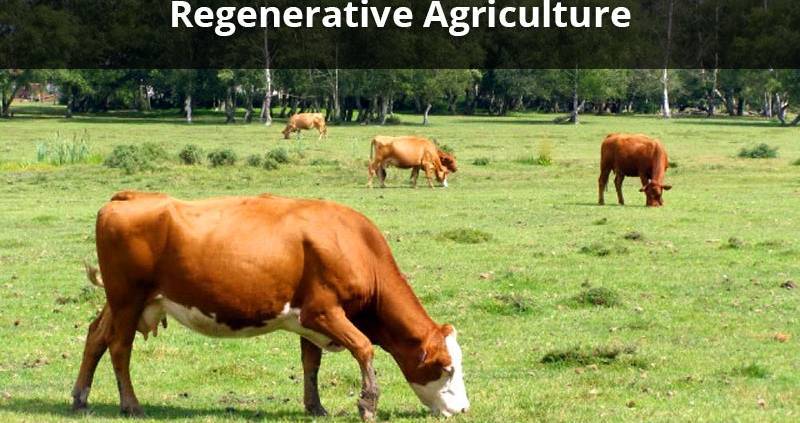“Regenerative agriculture provides answers to the soil crisis, the food crisis, the health crisis, the climate crisis and the crisis of democracy.” — Dr. Vandana Shiva, Regeneration International
Beginning almost two decades ago, a family-owned dairy farm belonging to Greg and Rachel Hart transitioned from conventional dairy farming to regenerative farming (Greenpeace New Zealand). Where typical farms maintain one or two animal species and a pasture of one or two crops for feed, the Harts maintain five animal species and twelve different crops for feed and other uses.
Large livestock like cattle graze an area first, followed by chickens which feed on remaining plants, spread manure as fertilizer, and pick out insects. Grazing areas alternate which allows for a layer of mulch to retain nutrients and protect against soil degradation and erosion. The Harts are free from using fertilizers or pesticides, cutting their costs dramatically. The Harts have also planted 105,000 trees in the past ten years for fruit, nuts, timber, and to regenerate native biodiversity. Their farm is now carbon-neutral with these trees off-setting their farm’s emissions. Additionally, the Harts built an “eco-lodge” where people can come to reconnect with nature, natural foods, and learn about regenerative agriculture.
Regenerative agriculture, sometimes called biodynamic farming or agroecology, is an increasingly popular practice among farmers, environmentalists, policymakers and international organizations worldwide; but what exactly is it? According to the Rodale Institute, regenerative agriculture includes several methods which must be practiced simultaneously. These methods include cover crops, mulch, compost, crop rotation, and conservation tillage (Rodale Institute). Further, regenerative agriculture rejects synthetic fertilizer and pesticide use and methods that disrupt soil life. The theory behind regenerative agriculture is to incorporate farming, recognized as a human intervention, into the natural ecosystem where various plants, insects, and animals interact. Unlike monoculture, this protects natural ecosystems and ensures the greatest environmental benefits while maintaining productive farms. Even more so than organic agriculture, which can still promote monoculture, regenerative agriculture benefits the farmer, the consumer, and the local ecology.
In general, primary environmental impacts of regenerative agriculture can include improved soil health, biomass and nutrient retention; improved root penetration and water infiltration; carbon sequestration; reduction of greenhouse gas emissions; and prevention from soil erosion, degradation, pests and diseases. Secondary environmental impacts can include biodiversity conservation, land regeneration, reforestation, and mitigation from and adaptation to climate change impacts. Apart from the environmental impacts that the Harts observe, their farm also employs twice as many people as conventional dairy farms, therefore benefitting the local community and economy.
There are even standards in place similar to organic standards or Fair Trade Certified standards. Demeter International is an organization that reviews and certifies products or supply chains that appropriately use regenerative or “biodynamic” agriculture methods. Demeter International standards do not permit synthetic nitrogen or phosphoric pesticides or fertilizers, or antimicrobials. Through on-site visits they regulate the production, processing, storage, packaging, and labelling of food, cosmetics, and textiles across sectors including agriculture, aquaculture, and bee-keeping.
This closed-loop system provides an alternative to conventional farming, where each aspect of the farm is a necessary resource that produces necessary outputs. Taking the Hart’s farm as example, a single chicken can be used to spread fertilizer and reduce pests. Its eggs can feed the Hart family, with its eggshells contributing to compost. Demeter International asserts, “Biodynamic farmers return more to the soil than they remove in the process of cultivating crops and animals; the farm is considered as an organism in which plants, animals, and human beings are integrated together” (Demeter International). For more success stories, refer to these 24 case studies of regenerative agriculture in action!




Leave a Reply
Want to join the discussion?Feel free to contribute!